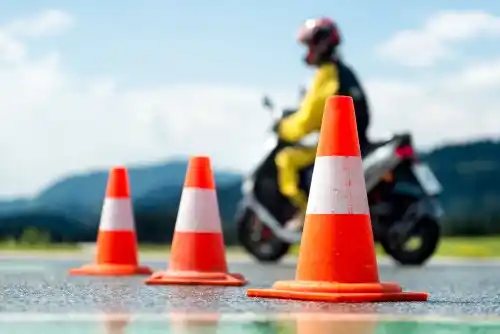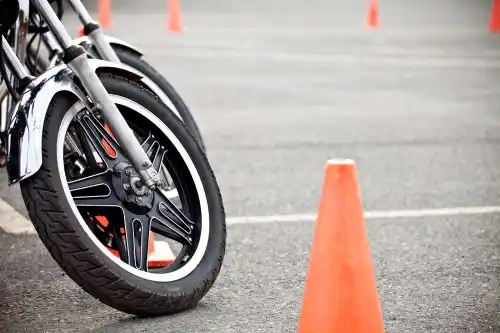Book motorcycle CBT training in Sturminster Newton, Dorset with any of the companies listed here
Click on any of the motorcycle training schools below to view more information and check availability.
On The Road Sturminster Newton
111 Rolls Mill Bridge, Sturminster Newton, Dorset, DT10 2HP
Approx. distance: 0.9 miles
Bransons Motorcycle Training Yeovil
22 Oxford Road, Yeovil, Somerset, BA21 5HR
Approx. distance: 13.3 miles
Morgan Motorcycle Training Somerset
Unit 1 & 2 Brympton Way, Lynx Trading Estate, Somerset, BA20 2HP
Approx. distance: 15.8 miles
Nicks Motorcycle Training Dorchester
19 Oakwood, Dorchester, Dorset, DT2 8UL
Approx. distance: 16.9 miles
CC Motorbike Training Poole
Makro Poole, Cabot Lane, Poole, Bournemouth, Christchurch and Poole, BH17 7BZ
Approx. distance: 18.6 miles
Lets Ride Wimborne
car park at The Hamworthy Club, Canford Magna, Wimborne, Dorset, BH21 3AP
Approx. distance: 18.9 miles
Honda of Bournemouth Training
5B Leyland Road, Bournemouth, Dorset, BH12 5HB
Approx. distance: 20.3 miles
Dorset Advanced Motorcycle Training Bournemouth
Kinson Conservative Club, 1394-96 Wimborne Road, Bournemouth, Dorset, BH10 7AR
Approx. distance: 21 miles
Tilleys Wessex Riders Weymouth
9 Frederick Place, Weymouth, Dorset, DT4 8HQ
Approx. distance: 22.7 miles
Salisbury Motorcycle Training
The Livestock Market, Netherhampton Road, Salisbury, Wiltshire, SP2 8RH
Approx. distance: 22.7 miles

Book CBT Now - Book motorcycle CBT training in Sturminster Newton, Dorset
Do you need compulsory basic training in Sturminster Newton or nearby in Stalbridge, Shaftesbury and Blandford Forum? Then you have come to the right place. Here at Book CBT Now, we can provide some of the best companies for you to get the training you need. We have many years of experience in this field and have become one of the most trusted sources of online booking for motorcycle training companies. Completing your 'Compulsory Basic Training' CBT test will allow you to ride any scooter, moped, electric motorbike, 50cc moped or 125cc motorbike of your choice. All you'll need to do is get a provisional UK license, suitable clothing and then book your CBT.
How can you help me find CBT training in Sturminster Newton, Dorset
When you use Book CBT Now to find a company for your CBT test in Sturminster Newton you will only be provided with approved training bodies that meet all requirements set by the Driver and Vehicle Standards Agency. We will provide you with all the relevant details about the company along with additional information such as; whether bike hire, helmet hire and gloves and jacket hire are included, if there is parking on the premises, if there is an indoor classroom and if they have female instructors. If you would like to find out more about the company local to you then we will also provide you with their contact details.

Getting a DL196 certificate in Sturminster Newton, Dorset
The instructors will evaluate your skills and progress in a one day course, or over a few days if necessary and once you have completed the training to their satisfaction, you can then receive your pass certificate or DL196. When it comes to CBT training in Sturminster Newton, we have a wide range of different companies that are perfect for you listed at the top of this page, please take a good look to find the most appropriate one for you.
Will I be on my own during a CBT?
Normally during a CBT test in Sturminster Newton there will be other riders with you, you will all take part in classroom and off-road sections together as well as practical sections. Taking the test in a group is a great way to calm your nerves. The majority of motorcycle training schools will also supply motorcycles for hire during your CBT test in Sturminster Newton so you do not need to bring one with you. Sometimes the price of your CBT includes the hire of a motorcycle and sometimes it doesn't, so we always advise that you check this before booking. Here at Book CBT Now we will provide you with the information for all of your local CBT companies and you can then decide which company you wish to use.